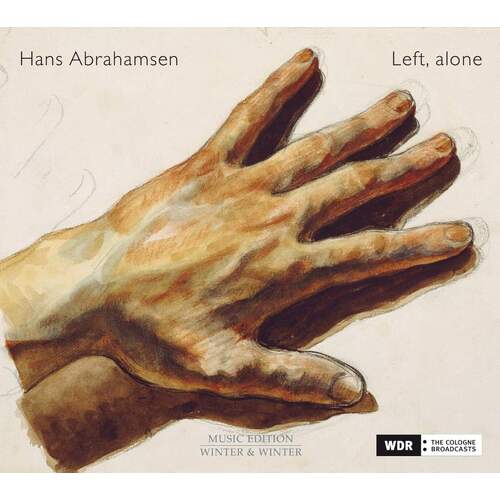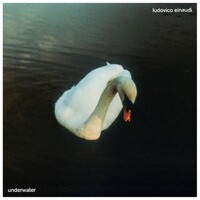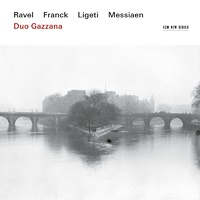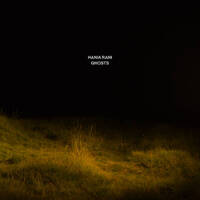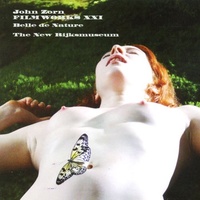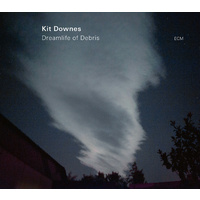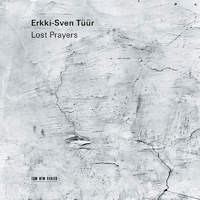2023 release
from W+W
»Left, alone« is Winter & Winter's seventh release of works by Danish composer Hans Abrahamsen. The collaboration began in 2009 with »Schnee«, followed by »/Walden/Wald/«, »Zählen und Erzählen« [with Four Pieces for Orchestra, Concerto for Piano and Orchestra and Ten Studies for Piano], »Gifts and Greetings« for the 40th anniversary of the Arditti String Quartet, »let me tell you« with Barbara Hanningan, Andris Nelsons and the Symphonieorchester des Bayerischen Rundfunks, which is one of the most successful contemporary music albums worldwide, »String Quartets No. 1 - 4« and now »Left, alone« with the WDR Sinfonieorchester. With the exception of »let me tell you«, the releases were made in collaboration with the WDR.
The album »Left, alone« presents »Ten Sinfonias« conducted by Peter Rundel, »Left, alone« with pianist Tamara Stefanovich and »Two Pieces in Slow Time“, both conducted by Mariano Chiacchiarini.
Ten Sinfonias
Fragments of a note
Over the years I have found a way of working where I again and again return to my previous works and sketches to see if there are hidden opportunities and ways as I did not see then or for that matter, could develop into new works.
A work which I often return to is my »String Quartet No. 1« subtitled »10 Preludes« from the spring 1973. This piece is in many ways a key work from my early period. It consists of ten short pieces — or maybe beginnings written in a new simplistic [or minimalistic] and poly-stylistical style.
It has for many years been in my mind to make an orchestral version of this string quartet, but how it could be done in an artistic new way was not clear for me until the summer 2010.
Chopin's first prelude begins in C-major, like Bach's first prelude from WK vol. 1. This is an identification and establishment of the starting tonality. In my »10 Preludes« by contrast the C major is first reached in the 10th prelude after a rather turbulent non-tonal start in the first prelude.
This tonal structure showed the way into an orchestration with and orchestra which is poly-stylistical in having horns, trumpets like old periodical natural instruments in C [horns too in E-flat], where the brass are limited to play only the partials. The timpani too are like an old instrument playing only Tonic and Dominant in C-major. The other instruments are modern, but the overall orchestration is like a baroque orchestra where there are only oboes and bassoons as woodwinds.
After reaching this concept of orchestration all became clear for the re-thinking of the »10 Preludes«, because the direction towards C-major reflects how the instruments can participate in the music. As a dogma, I do not add any new parts to the string quartet and the string section, except the double basses, are the same parts as in the string quartet. The woodwinds are more or less doublings and the horns, trumpets and timpani are joining the music as much as they can within their limitations until the last movement where the music reaches the instruments’ tonality so to speak.
I feel myself in family with composers who again and again re-work their pieces from one version to another – say Ravel or Stravinsky. The latter re-thought in 1962, the small simple piano pieces »Les Cinq Doigts« from 1921 for a small orchestra titled »Eight Instrumental Miniatures«. This is just one example. One could go on to mention how Stravinsky transforms and re-thinks his own to say nothing about works of other composers.
I call this version of the »10 Preludes« »Ten Sinfonias for orchestra«, using the »sinfonia« in the term from the baroque as an instrumental prelude.
»Ten Sinfonias« is a co-commission by the Iceland Symphony Orchestra and DR UnderholdningsOrkestret in Danmark.
— Hans Abrahamsen [2012]
Left, alone
I was born with a right hand that is not fully functional, and though it never prevented me from loving playing the piano as well as I could with this physical limitation, it has obviously given me an alternative focus on the whole piano literature and has given me a close relationship with the works written for the left hand by Ravel and others. This repertoire has been with me since my youth.
My very first public performance of one of my own works was in autumn 1969. The piece was called »October« and I played the piano with my left hand and the horn, my principal instrument [the only instrument that can be played with only the left hand]. Part of the piece requires the performer to play natural harmonics of the horn directly into the open strings of the grand piano to create resonance. The pedal was kept down by an assistant lying on the floor.
Through decades the idea of writing a larger work for piano left hand has been in my mind. This new work is not written for a pianist with only one hand, but rather by a composer who can only play with the left hand. The title »Left, alone« contains all kinds of references, not only to the obvious fact that the left hand is playing alone. »Left, alone« is divided into two large parts, each consisting of three smaller movements – in effect, six in total.
The work was commissioned by Westdeutscher Rundfunk, and co-commissioned by City of Birmingham Symphony Orchestra, Danish National Symphony Orchestra and Rotterdam Philharmonic and written for Alexandre Tharaud.
— Hans Abrahamsen [2015]
Two Pieces in Slow Time
This composition was written in 1998-1999 during my break from composition. Back in 1983 I had written the first seven of my »10 Studies for Piano« and finished the tenth study in 1986. I finished the two remaining pieces in the fall of 1998 and thus I slowly started composing again. During this time I was transcribing, orchestrating and recomposing my own works as well as other composer’s works.
Two of the »10 Studies for Piano«, number 1 and number 10, are both very slow in the piano version and I wanted to recompose these movements for brass ensemble and percussion after speaking with Mogens Andresen, professor in Brass at the Royal Danish Academy of Music. So I composed the piece with the title »Two Pieces In Slow Time« for the Academy’s brass ensemble DKDM Brass.
I’ve always been preoccupied with time – both the very fast moving time and the very slow time, like in slow motion. In my later work »Schnee«, I have a movement with the tempo marking »Tai Chi«, which is to be played so slowly that it is on the verge of stopping completely. Where the pulse almost ceases to exist. Similarly, I can find very fast timings in my piano concerto »Left, alone«.
Both the »Two Pieces In Slow Time« are related to the piano versions of the respective studies in different ways. In the first piece time moves forwards, and in the second time moves backwards if you compare it to the piano version. In the second piece, the music starts followed by a long pause. The music then starts again and rises triumphantly with the instruction »maestoso alla trombe«- to be played like trumpets. The intention in the piano version was to create an illusion that the notes are held for a long time. With the recomposition for brass ensemble and percussion the »maestoso alla trombe« instruction became a reality. The »Two Pieces In Slow Time« and the »10 Studies for Piano« is thus not only piano technical studies but also studies in composition – how can the same material be changed, used and recomposed in different forms.
— Hans Abrahamsen [2023]
(025091028726)
| SKU | 025091028726 |
| Barcode # | 025091028726 |
| Brand | Winter&Winter |
Be The First To Review This Product!
Help other Birdland Records users shop smarter by writing reviews for products you have purchased.


